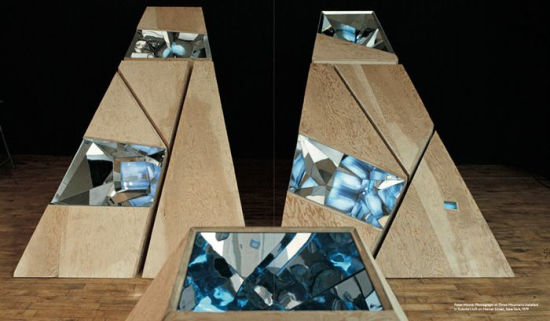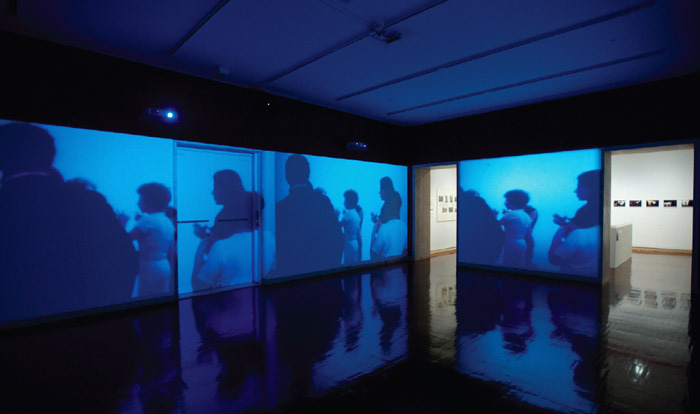by Max Sackett
When I first got to MoMa, I was excited because I had never been, and it had been a while since I had been to any museum. It had been at least 2 years. When I arrived at Kubota’s exhibit I was a tiny bit confused. I sort of expected something more concrete. For example a screen with some sort of story or narrative. Not that I was expecting a film per se but something a little more visual as in video from then a structure with several videos displayed around it.

The piece was gonna be what I wrote my original blog post about however I wasn’t sure that I really understood it. I think of myself as someone who is pretty intend with creativity and art, yet the piece just did not speak to me. I also to be honest was a tad confused about what the piece was. There were several structures in exhibit and I was not sure if they were all part of it or if it was just the one in the center. The signs surrounding the pieces were not as helpful as I hoped in relieving my confusion.
As for my understanding of the piece it comes to me jus to simply be a piece of art. rather than something that has a message or a meaning. I find it soothing and relaxing to look at. As someone myself who thinks art is subjective I appreciate the abstraction in these pieces.

Shigeko Kubota was one of the first of her generation to incorporate video into her art work. Before this most visual artists worked in more simplistic and old fashioned ways such as sculpture, paint and drawings. Kubota brought video into her art, which typically had only been seen on television or film. There was no social media or Youtube for people to create visual art on. It had to be something that was genuinely created.

